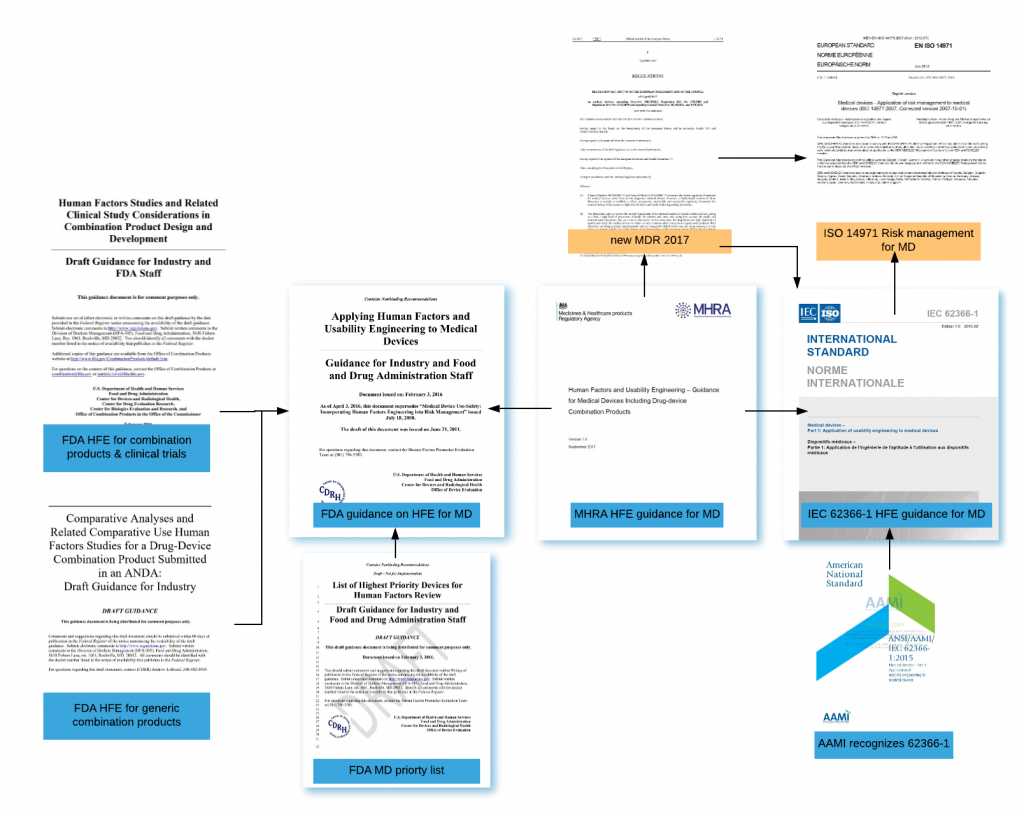Regulatory Framework
Chaos was the law of nature; Order was the dream of man.
- Henry Adams -
The regulatory framework for Human Factors Engineering for Medical Devices (EU & USA)
The Regulatory framework that is relevant to Medical Devices design is considerable and the wider you cast your net, the more directives, guidances, and standards you will catch.

I apologies for the messy image that represents the messy regulatory playing field. BUT, I promise you, once you get it, it all makes sense and it is very doable (and useful!) to extract the relevant guidance elements and embed them into your design cycles, risk management process and pre-market submission strategy. It will actually make your life easier.
Bringing it all together
I will discuss the Regulatory framework in somewhat more detail in a future blog so, for now, I will stick to a very brief summary.
First of all there are guidances and standards. The IEC62366-1:2015 is a standard that describes the process of Human Factors Engineering for medical devices and it is recognized basically worldwide, including Japan for instance. The MHRA and FDA are guidances on Human Factors / Usability Engineering that convey the way of thinking they expect from Medical Device manufacturers when it comes to developing a safe product; Be aware of the end user and his/her environment and, through testing, make sure you understand the use errors that may occur as far as they could result in harm to the patient, mitigate those, and than prove that the product is safe and effective (see the 3 layers of defense).
From a European perspective, the MHRA (UK) guidance on Human Factors Engineering (HFE) is one to keep an eye on. It differs in some areas from recommendations issued by the European Union as it tends to adopt the US FDA recommendations, more than European standard. There are indications that other European countries may elect to recognize the MHRA guidelines to avoid having to come up with a version of their own. But don’t quote me on that like I won’t quote who told me.
So, to a large extend , European and US guidances have been harmonized. The basic concepts are the same but differences exist, like the way you should approach use risk analysis and the way, in the end as part of your pre-market approval file, evidence of good HFE practices are to be reported.
If you are looking to introduce your product both on the European and the US market, make sure that you are well informed so you can optimize your processes and minimize the duplication of work.
